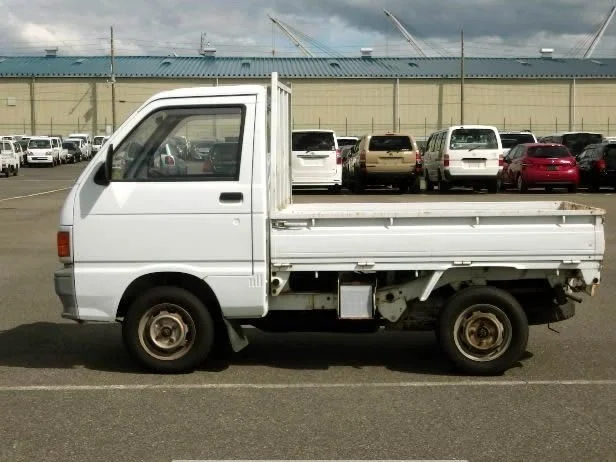During the process of researching Japanese blacksmith shops for our summer 2025 timberframe workshop I discovered Pierre Nadeau. Here was a blacksmith who had studied the craft under several masters in Japan, and built his own traditional charcoal forge, in his own timber frame workshop, and he was only 3 hours away in Quebec.
Read MoreIn updating the website for the Maine Japanese Woodworking Festival, I asked prior attendees for short testimonials, Matt Connorton wrote this kind and generous letter. Thank you Matt.
Read MoreI fell in love with these trucks when I visited Japan, first on a solo trip around the country, and then later when I apprenticed as a woodworker. They are a blast to drive, small and nimble, and very utilitarian. I always wanted to have one in the States. It was clear that on my property in Maine I’d need some sort of vehicle to run around the property to haul tools and materials and do maintenance work.
Read MoreFrom late June, 2019 until the end of March 2020, I lived in the town of Mitsu, north of Okayama, Japan, and worked as an apprentice carpenter for the Somacousha Company, under the instruction of Yamamoto Kohei and Jon Stollenmyer, referred to as “Yama San” and “Jon “ respectively…
Read MoreThe inspiration for this build was a fine sliding table saw I used while apprenticing in Japan. It did not have a super accurate work stop and required checking square, but otherwise it was a very stable and precise tool. I set out to create something similar, but that could be adapted to the common western table saws.
Read MoreOver the past couple of years, what started out as a small seed in my mind has germinated and taken root. Pottery. It seems inevitable that a crafts-person might dabble in other disciplines, experiment and so forth. The idea of of shaping something from clay, and turning it into a useful object appealed to me.
Read MoreAfter returning from my last pilgrimage to Japan during the summer of 2018, I had the fantastic fortune to meet Kohei Yamamoto and Jon Stollenmeyer of Somacousha in Okayama, Japan during the…
Read MoreHere follows a detailed description of the process I used to make a set of shoji doors. While many of the shoji doors in this project had different over all dimensions, the joinery dimensions were all similar, the main differences being…
Read MoreA critical step when building a set of shoji doors is to prepare the Kumiko, the thin strips of wood that divide the light from the washi paper. These strips must all have an exact thickness so that thier lap joints fit snuggly with now gaps. Additionally, all surfaces should ideally be hand planed to…
Read MoreI’m very humbled by the kind words presented to me by my client after having worked on their home and completing the projects including the Mandala ceiling, Tokonoma and a set of Shoji Doors. Here follows the full text of his…
Read MoreIt is often helpful to know how the wood we are using is oriented in the tree. This is particularly needed for Japanese carpentry where the position is important for aesthetic, strength and quasi spiritual reasons…
Read MoreFrom June 12 to July 24, 2018 I lived and traveled throughout one of my favorite countries, the land of the rising sun, the island nation: Japan! The spark for the trip occurred early in the year, the deeper I would dive into the craft of Japanese woodworking, the more I desired to go back to the source. Though I spent…
Read MoreMy Grandmother taught me a lesson that I just remember: Have a supply closet.
Read MoreMy first stab at a formalized system to organize and mark the ends of boards for quick identification.
Read MoreAfter a few years, many false starts, and lots of work, I finally have a workshop I can call my own, here is an overview of the renovations.
Read MoreIn the autumn of 2017 I embarked on an epic road trip through Canada, down the west coast, and back through the central Rockies. Here are some details on the trip.
Read More
















